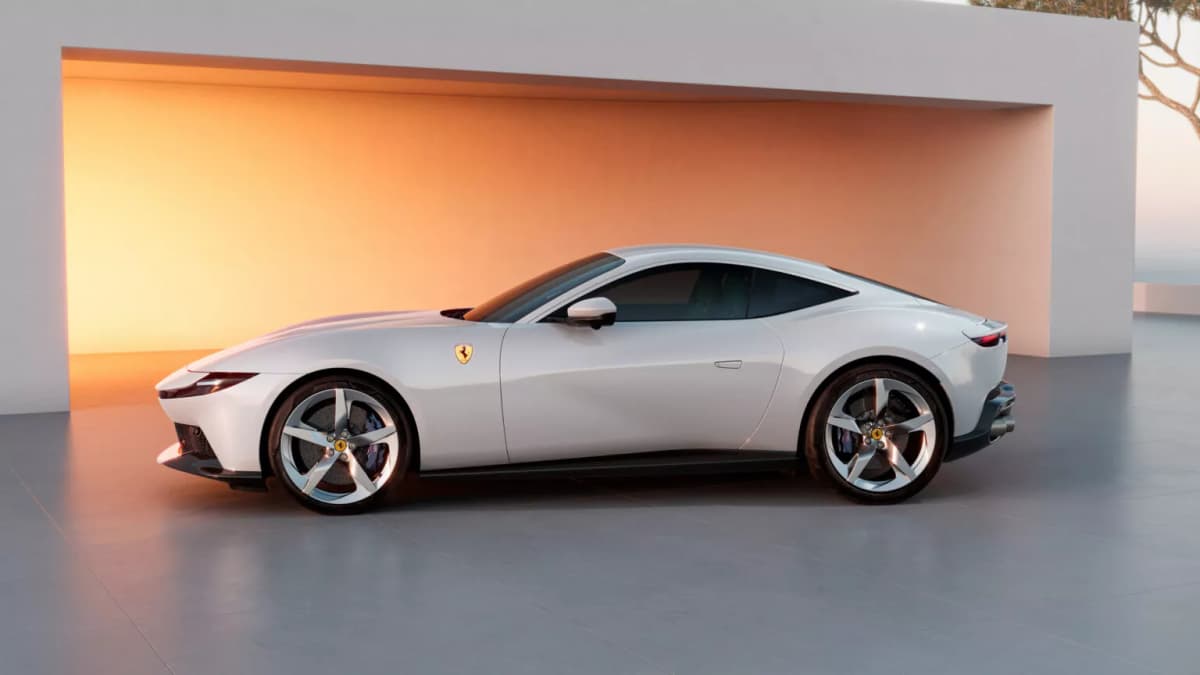Ferrari has introduced the new Amalfi, a front-engine supercar that represents a significant update to the existing Roma model. While the Amalfi showcases enhancements in technology and design, it fundamentally retains much of the Roma’s structure, including its engine and performance specifications. The Amalfi is designed to compete in the ever-evolving supercar market, bringing both improvements and some controversies in its aesthetics.
Engine and Performance Remain Familiar
The heart of the Amalfi is an upgraded version of the 3.9-liter twin-turbo V8 engine found in the Roma. Ferrari has made some modifications, including enhanced turbochargers, a raised redline, and a revised engine control unit, which collectively boost the output by just 20 horsepower. The powertrain continues to feature the same eight-speed dual-clutch transmission, with the most notable change being an updated exhaust system to meet stricter noise regulations.
While enthusiasts might expect a more radical transformation, the Amalfi’s performance metrics closely mirror those of the Roma. This consistency in power and handling reflects Ferrari’s strategy of evolutionary rather than revolutionary updates for its models.
Interior Upgrades and Design Changes
The interior of the Amalfi marks a dramatic improvement over its predecessor. The refreshed cockpit maintains Ferrari’s signature dual design philosophy but eliminates the central ‘ramp’ section that previously divided the space. The new layout offers a more streamlined and premium feel, featuring a landscape-oriented central screen and an anodized aluminum console that can also be opted for in carbon fiber.
Importantly, Ferrari has returned to physical buttons on the steering wheel after customer feedback criticized the previous model’s haptic touch surfaces. This change indicates Ferrari’s responsiveness to consumer preferences, showcasing their commitment to enhancing user experience. The only remaining haptic controls pertain to the mirror adjustments, which are infrequently used, making this minor inconvenience manageable.
On the exterior, the Amalfi’s design shifts from the rounded aesthetics of the Roma to a more minimalist approach. Critics have noted that while the new look is cleaner, it risks appearing too bland compared to its predecessor. The signature slatted grille of the Roma has been replaced with a more subdued ‘mask’ design, echoing elements from the Purosangue SUV. While some applaud this simplification, others have likened its appearance to that of a new Prius, suggesting a loss of distinctiveness.
The rear design also sees a departure from the more sculpted lines of the Roma, opting for a flatter style that some observers feel resembles the Jaguar F-Type. The overall consensus is that the Amalfi looks modern, particularly in its interior, but opinions diverge on whether these updates enhance its appeal.
In summary, the Ferrari Amalfi represents a strategic refresh rather than a complete overhaul. By refining its interior and addressing consumer feedback, Ferrari aims to maintain its competitive edge in the high-performance market while reimagining the visual identity of its vehicles. Despite its familiar underpinnings, the Amalfi stands as a testament to Ferrari’s commitment to innovation and customer satisfaction in the world of supercars.
